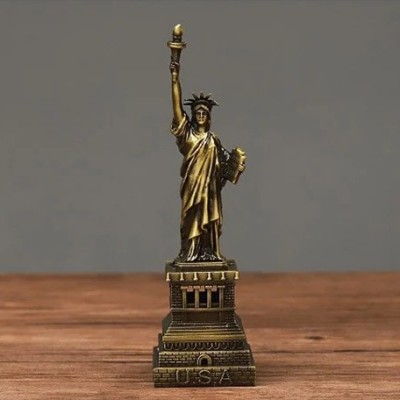
spectator.org
The Fabric of America… ‘Liberty and Justice for All’
On an early fall morning, 133 years ago this month, thousands of kids at schools throughout America rose together and looked up to a crisp, new American flag in their classroom. They then began to recite in unison 23 words authored by an American few today honor or even remember.
I pledge allegiance to my Flag and to the Republic for which it stands — one nation indivisible — with liberty and justice for all.
Yet, these few words constitute a far weightier statement about America — and Americans — than is generally acknowledged.
Although the first version of America’s pledge was written in 1885 by Captain George Thatcher Balch, a Union Army officer in the Civil War, it was another American who penned the version (with a few additions later) we recite today.
How the government carries out its obligation to achieve liberty and justice is often what creates problems in society.
It is said that Francis Bellamy wrote the Pledge of Allegiance we know today in 1892 in only a few hours. But it was the result of several years of effort at one of America’s bestselling magazines, Youth’s Companion. In a marketing campaign, the Companion decided to offer U.S. flags to readers who marketed subscriptions. Coincident with the approaching 400th anniversary of Columbus’s landing in America, the magazine decided to offer “Old Glory” to all public schools across the U.S. and honor it with an oath.
Bellamy, a onetime Baptist minister, was at the time a writer for the Companion. Historian Richard J. Ellis, in his work To the Flag: The Unlikely History of the Pledge of Allegiance, notes that Bellamy’s writings were typically loaded with marketing rhetoric and political espousals. But to his credit, Bellamy argued that pledging allegiance would ensure “that the distinctive principles of true Americanism will not perish as long as free, public education endures.”
With the advent of World War II, many public schools instituted morning recitations. And a slight modification was made during the “Cold War” — President Eisenhower added “under God” in 1954 — essentially to distinguish the U.S. from atheistic Communism. (RELATED: Is the Right Pining for Racial Purity?)
As of this writing, although recitation of the pledge by students in schools is no longer a federal mandate, almost all states mandate public schools to at least schedule time for the pledge — only Hawaii, Vermont, and Wyoming do not. Moreover, Congress begins each day with the pledge, as does the U.S. naturalization ceremony, where America’s new citizens take the oath. Not a bad history for a piece of writing of only 23 words that began as a PR stunt. (RELATED: Trump Is Right. The Federally-Funded Smithsonian Should Be Pro-American.)
What is so compelling about Bellamy’s words is their affirmation of universal principles. They arrive late in the piece, but they pack a powerful philosophical punch.
Two principles are given voice: liberty and justice, but it’s the ending to the pledge — “liberty and justice for all” — that transforms abstract concepts into concrete obligations which the state has a responsibility to affect for all Americans.
When we recite the pledge we are exclaiming to the world this is who we are as Americans and what we stand for: we are both promising to be loyal to “the Republic for which it [the flag] stands” and our government is charged with the responsibility to provide us “with liberty and justice for all,” in whatever form that obligation might take.
Through the pledge, liberty and justice become tangible responsibilities which our government, bound by constitutional restraint through the Bill of Rights, is charged to honor and respect.
Echoing British philosopher John Locke, the Declaration of Independence asserts that all have inalienable rights (liberty in particular), and that the government’s central purpose is to defend those rights.
Classical liberalism, as articulated in the Declaration, holds that a divine providence “endowed” humanity with rights that are inalienable and therefore natural — not a function of human intervention. It holds further that there is a natural law which operates as an ethical principle from which natural rights are derived and through which humans recognize their liberty — their freedom. The philosopher Isaiah Berlin called them negative rights, as they are freedoms we have that cannot be taken from us by anyone, including a government.
Yet, Berlin also spoke of positive rights, which are granted (legislated) by the government. These are of human derivation and operate to grant rights to Americans based on the government’s obligation to achieve liberty and justice for all.
But for the government to affect freedom and justice for all Americans, achieving liberty (freedom) cannot be divorced from equality — “equal opportunity” for all. The greatest degree of equality possible must be sought, consistent with the least disruption of individual freedom. Otherwise, it is not “justice for all.” French philosopher Jean Jacque Rousseau called this — the “common good.”
How the government carries out its obligation to achieve liberty and justice is often what creates problems in society — liberty being protected while endeavoring to achieve equality by creating positive rights through legislation.
The issue is not whether positive rights (e.g., Affirmative Action, Voting Rights, Hate Speech Laws, etc.) are “good or bad” — “right or wrong.” Rather, the issue rests on determining how positive rights are affected with as minimal a cost to individual freedom as possible, consistent with the government’s responsibility to achieve equality — “equal opportunity under the law.” Achieving a balance between these two is what provides the basis for “liberty and justice for all.”
The controlling issue is the last few words of the pledge — “for all.” Through that phrase, in effect, what the pledge refers to is a fair and equitable distribution of resources, opportunities, and privileges in society. How one affects the latter for the benefit of all the people determines whether justice for all is served. And that only occurs when freedom through our natural rights is protected on a level commensurate with the equality legislated through positive rights from the government. The Bill of Rights in the Constitution is there, specifically, to proscribe the federal government from doing otherwise.
America’s Pledge of Allegiance is a far weightier philosophical proposition than is likely recognized by those who recite it routinely. It addresses the very essence of who we are as a people, what we value, and — above all — what we are unwilling to surrender and what many have died to protect for all Americans: “liberty and justice for all.”
READ MORE from F. Andrew Wolf Jr.:
The New Archbishop of Canterbury — Mrs. Mullally
Trump’s Economic Success Leaves Liberals Red-Faced
Trump, Nobel, and the Globalism of Oslo









